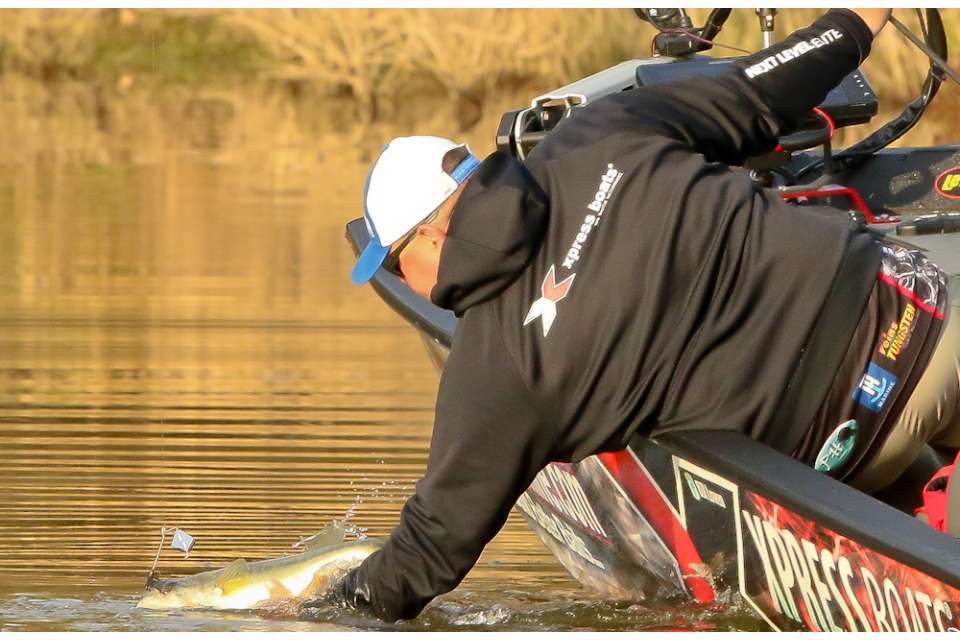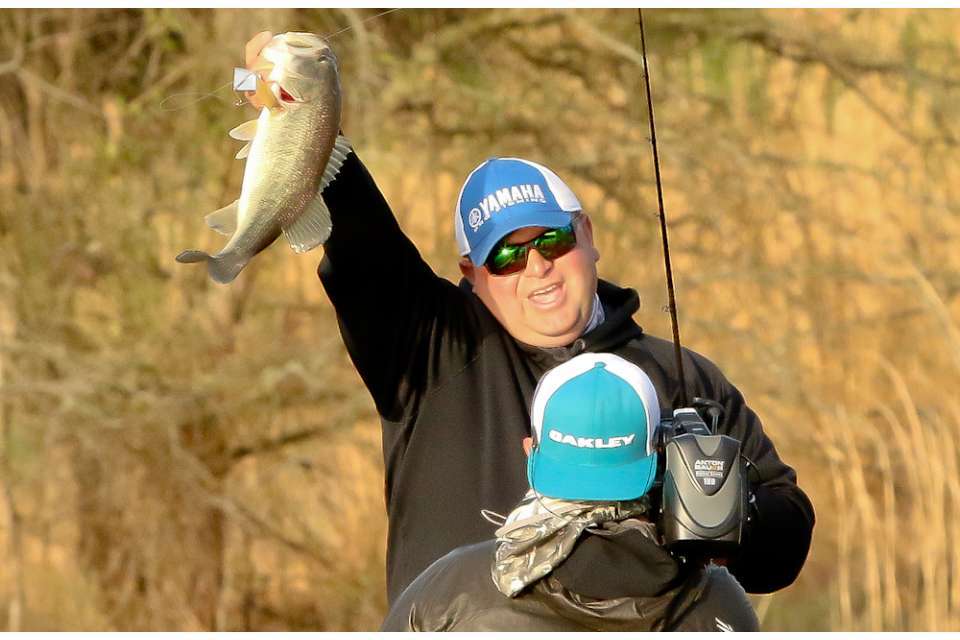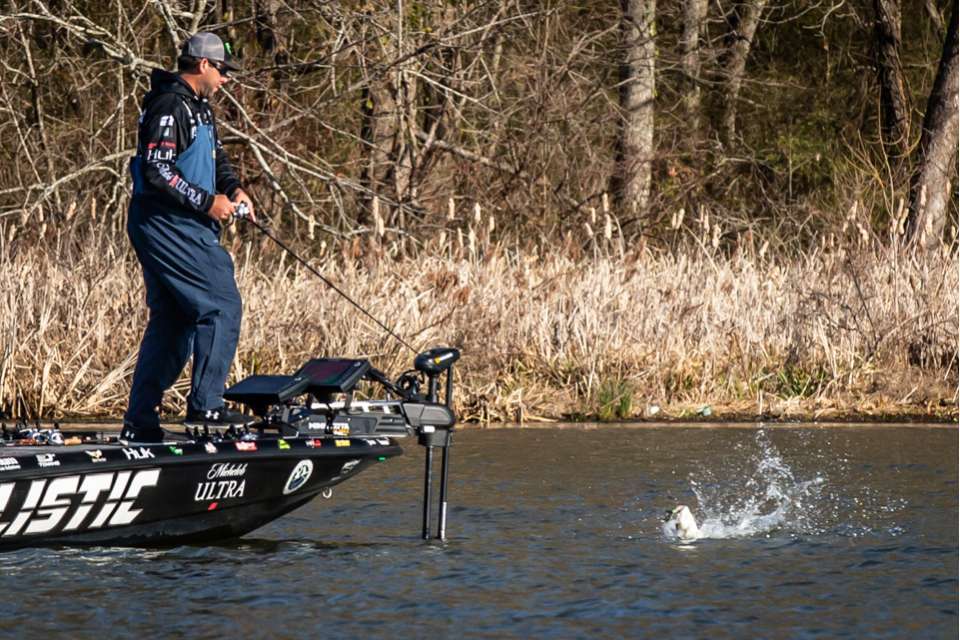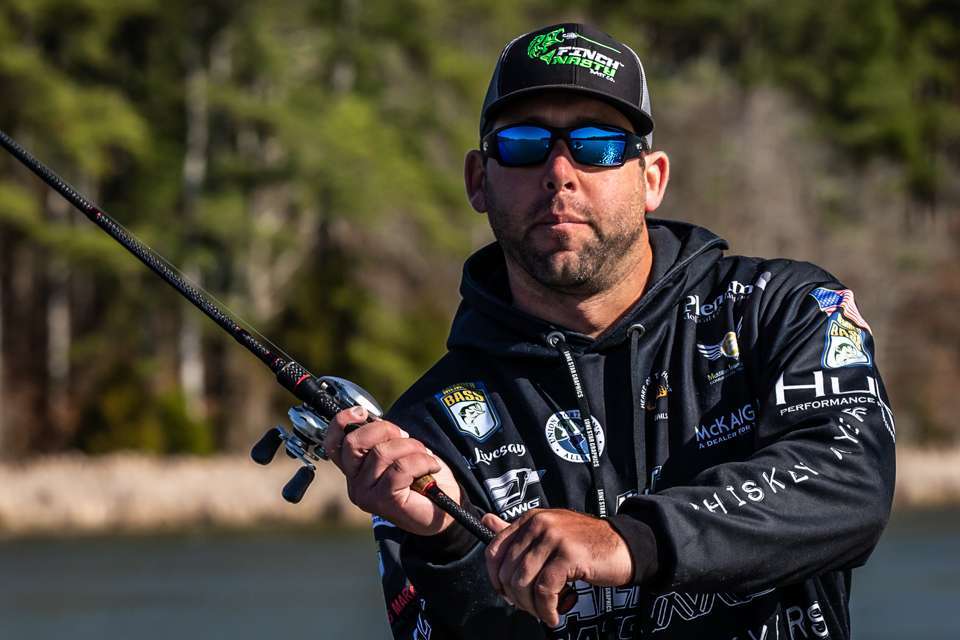
You would think that today’s pressured bass would have learned long ago to avoid anything as obnoxious as a buzzbait. But this noisy, sputtering lure continues to dupe bass year after year and decade after decade. Indiana Bassmaster Elite Series pro Bill Lowen is often perplexed as to why bass are suckers for it.
“Every single time I catch a bass on a buzzbait, I wonder why they eat it,” Lowen said. “I guess it’s like a mosquito flying over your head. Eventually you’re going to swat at it.”
Bass have been swatting at his buzzbaits since he was a youngster. He starts throwing one in springtime when the water warms to about 54 degrees, which is earlier than most anglers tie on a buzzbait.
“I don’t get a lot of bites on it then, but when I get one it’s usually a good fish,” he said.

A buzzbait produced most of his bass, and all of his bigger fish, when he nabbed seventh place with a weight of 60 pounds, 15 ounces, at the 2019 Elite Series event at Lake Hartwell. Lowen’s buzzbait picked off bass that had moved to shallow bushes, docks and other bank cover prior to spawning.
At Hartwell he relied on his go-to 1/4-ounce buzzbait from lurepartsonline.com, which comes without a blade or a skirt. He completes the lure with a silver or gold blade and a black or white skirt.
“I typically go one step up on the blade size so I can slow the buzzbait down to a crawl,” he said. “As it gets warmer in the summer, I may speed up a little bit and twitch the bait next to cover to make it splash.”
He doesn’t limit his buzzbait fishing to shallow water. In clear lakes he has caught bass hanging under docks floating over 10 feet of water and bass suspended in standing timber that was rooted 20 feet beneath the surface.
“I’ve done well paralleling bluff swings, too,” he added.
Soft plastic dressings
It appears that the buzzbait has gotten even more potent now that anglers are replacing the skirt with soft plastic baits. When he wants a more realistic baitfish profile, Lowen swaps the skirt for a 3.75-inch Strike King Rage Swimmer Swimbait or a 4-inch Caffeine Shad Jr.

Texas Elite Series pro Lee Livesay fishes a soft plastic bait in place of a skirt “98% of the time.” When dealing with calm, clear water, he threads Netbait’s 3 1/4-inch Little Spanky Swimbait onto the hook of a 1/8-ounce buzzbait to tempt bites.
In most other situations he casts a 3/8- or 1/2-ounce Lunker Lure rigged with a white, black or green pumpkin pearl Zoom Horny Toad. He shoves the toad over the buzzbait’s head and secures it with a drop of super glue. He stressed that you must moisten the head of the buzzbait and push the toad over the head in one smooth motion to avoid tearing up the toad.
“The weight of the toad helps you cast farther, and it gives a bass something to grab and hold onto a little bit longer,” Livesay said. “A major thing, especially in fall time, is that I can skip a buzzbait with a toad under docks and bushes. That’s almost impossible with just a skirt.”
He begins casting a buzzbait in the spring when the water warms into the low 50s. He claimed that the ideal conditions at this time are light rainfall with a little bit of chop. When shad are spawning he fares better when the sun shines with a bit of wind.
“In fall you just throw the stupid thing whenever,” he said.
Buzzbait tackle
Bill Lowen: 6-foot, 11-inch, Lew’s Custom Lite Speed Stick Bladed Jig rod, a 6.8:1 gear ratio Lew’s Lite reel and 17-pound fluorocarbon line.
“A lot of guys have a tendency to pull a buzzbait away from the fish,” Lowen said. That rod gives the bait to them because it’s got a perfect parabolic action.”

Lee Livesay: 7-foot, 3-inch, medium-heavy Halo Fishing TI rod, a 7:1 gear ratio reel and 50-pound braided line.
“Braided line gives me a better hookup ratio and lets me rip bass out of grass and other heavy cover,” Livesay said. “I can skip it good, and I never have to retie.





